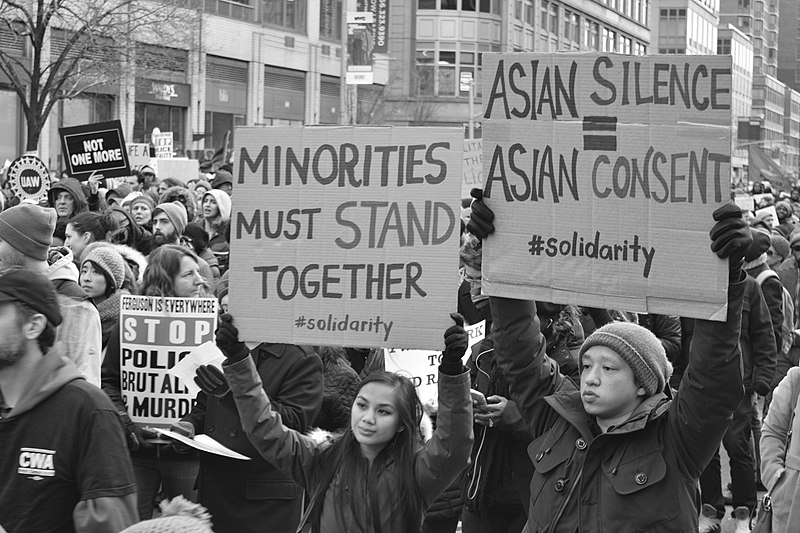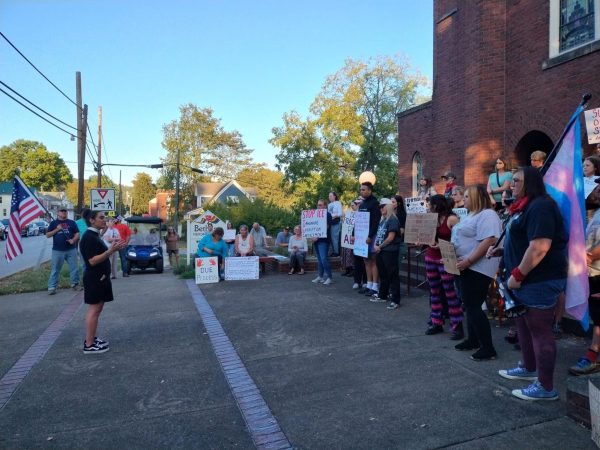Anti-Asian racism and hate sweeps through nation amid COVID-19 pandemic
Asian American protestors March 2020
On March 16, 2021, eight people were killed at three different spas in Atlanta, six of the victims were Asian American women. This tragedy has heightened fear in the Asian American community that similar crimes and hate could continue. Investigators have not ruled out a racial motive in this crime because the main suspect, Robert Aaron Long, has denied his actions being hate related.
As reported by the New York Times, there have been around 3,800 hate crimes against Asian-Americans and Pacific Islanders in this past year. Many of these come from the COVID-19 pandemic and blame wrongly being placed on the Asian community for the spread. The Washington Post stated that there has been a 150 percent increase in Anti-Asian hate since the pandemic began. After former President Donald J. Trump called the COVID-19 virus names such as “the China Virus,” “the Wuhan Flu,” and “the Kung Flu”, some Americans began to believe the sterotype to be fact.
A movement called Stop AAPI Hate was started on March 9, 2020 by the Asian Pacific Planning and Policy Council, Chinese for Affirmative Action, and the Asian American Studies Department of San Francisco State University to combat the rise. They claim to have a 5-pronged approach that includes “…[Serving] as the leading aggregator of anti-Asian hate incidents, [offering] multilingual resources for impacted community members, [providing] technical assistance from rapid response to preventative measures, [supporting] community-based safety measures and restorative justice efforts, [and advocating] for local, state, and national policies that reinforces human rights and civil rights protections.”
COVID-19 did not mark the start of this hatred. It has gone back into at least the 1850s with the People v. Hall case. In this case, the California Supreme Court made the decision that the testimony of an Asian man witnessing a white man murder someone was inadmissible in court due to his race. The judge did not stop here and went on to say that the Chinese were “…a race of people whom nature has marked as inferior, and who are incapable of progress or intellectual development beyond a certain point.”
Jumping forward roughly thirty years, Congress passed the Chinese Exclusion Act of 1882 which banned immigration from China for ten years and placed strict rules on Chinese-Americans that were already in the country. This act was one of the first major pieces of immigration legislation. There was not a similar act or piece of legislation until World War II when Pacific Islanders were placed in internment camps during the 1940s. Most of this hate came from the events that took place at Pearl Harbor, Hawaii.
Comparatively to the COVID-19 pandemic, the Bubonic Plague in the 1900s sparked tension in the Asian-American community as the first United States’ patient was a Chinese resident of San Francisco, where Chinatown is located. Not long after, Chinatown itself was placed in quarantine which caused citizens to worry that they would be further viewed as immigrants that were “unhygienic” and/or “disease-harboring.” Like the current pandemic, these views and scapegoating come from underlying racism and xenophobia that has been in the US for centuries.
There are several ways that Anti-Asian hate can be combated. To give immediate help, support can be given to AAPI groups in Georgia, such as the Asian American Resource Center, which are working hard to give support to the community following the recent tragedy. Another step is to speak out about hate or racism. This is also a step to be taken with hate crimes.
If you have witnessed a hate crime of any kind, you can report the situation to local authorities. Finally, take time to educate yourself and others about what is currently going on in the country and the world.
For more information about the contents of this article, please contact the author, Emma Beatty, at [email protected].
Emma Beatty is a first year student at West Liberty University majoring in Human Biology. She has the intentions of going on to become a Physician Assistant....







